Internet of Poultry - Fully automated chicken shed
-
The goal of this project is to automate our chicken shed to such a level that the chickens can survive our summer vacation without outside help.
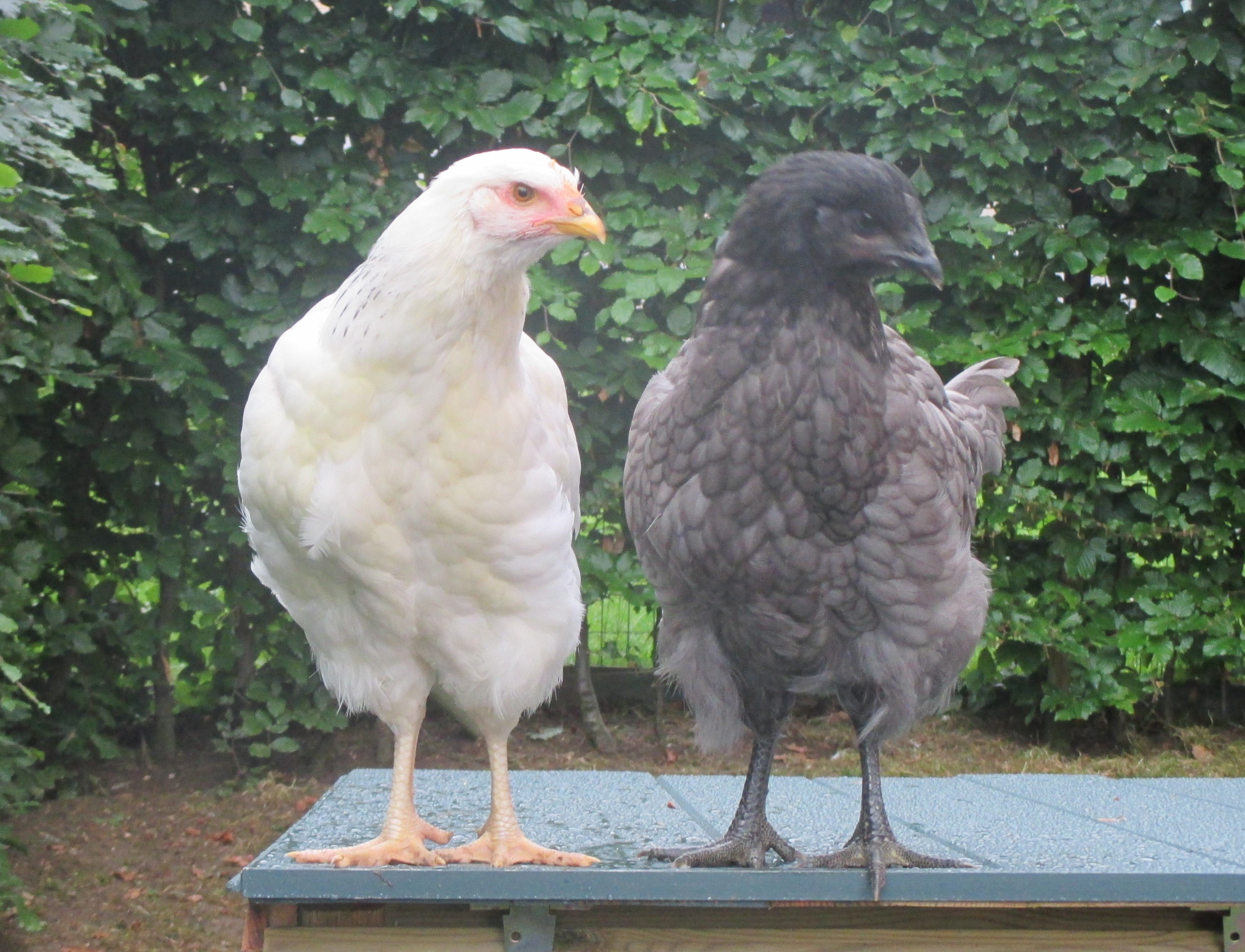
The project is based on Domoticz(rPi) and MySensors (Sparkfun Redboard)
Sensors in the shed :- Temperature + humidity
- Ambient light sensor
- Current/voltage on the solar panels and on the motor
- PIR sensor
- End-of-run switches
- Two buttons for local activation of the door
Actuators :
- DC motor for opening/closing the door
- Relais for switching the inside light
- Relais for switching the webcam
The board arduino shield for connecting all the wiring
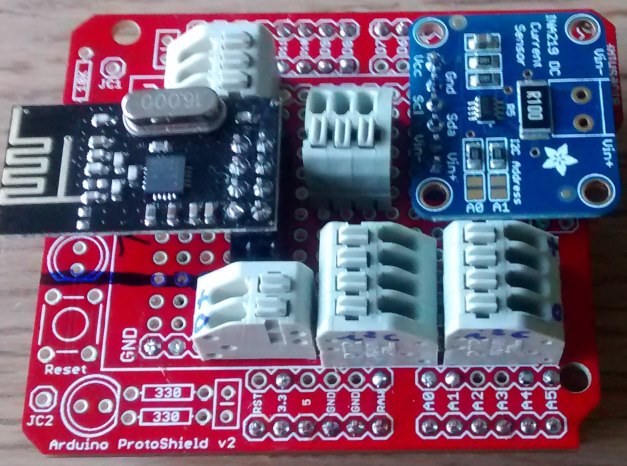
The complete installation
From left to right : (temporary) router for remote USB connection for uploading sketches, Arduino with shields, DC motor, Solar charging controller.
,

The shed in the making
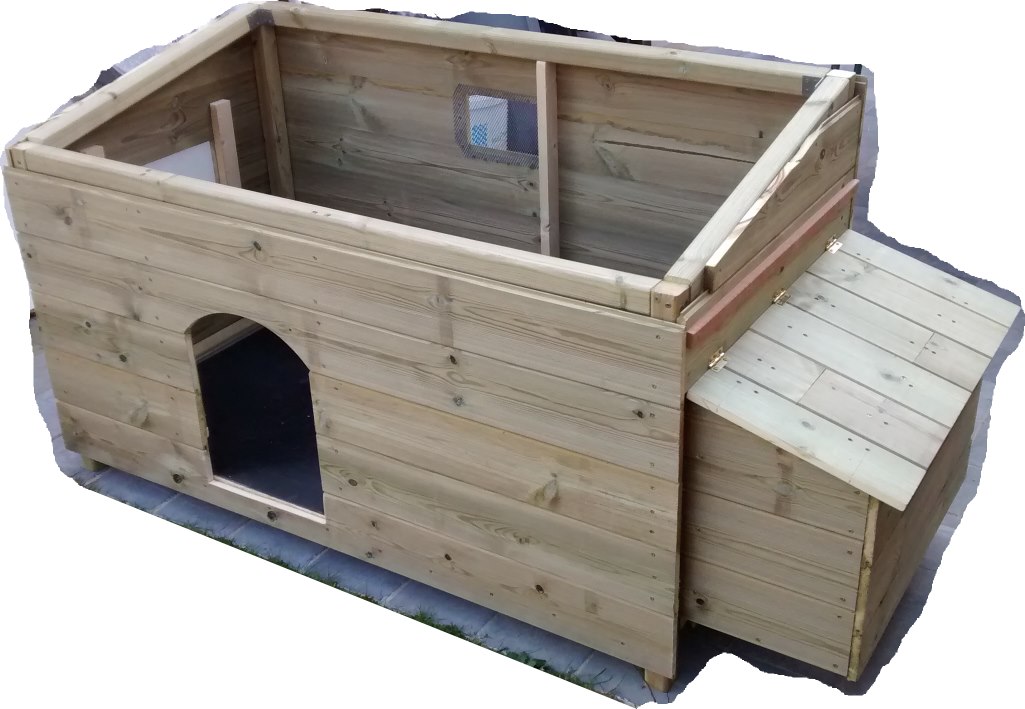
The door mechanism & one of the end-of-run sensors
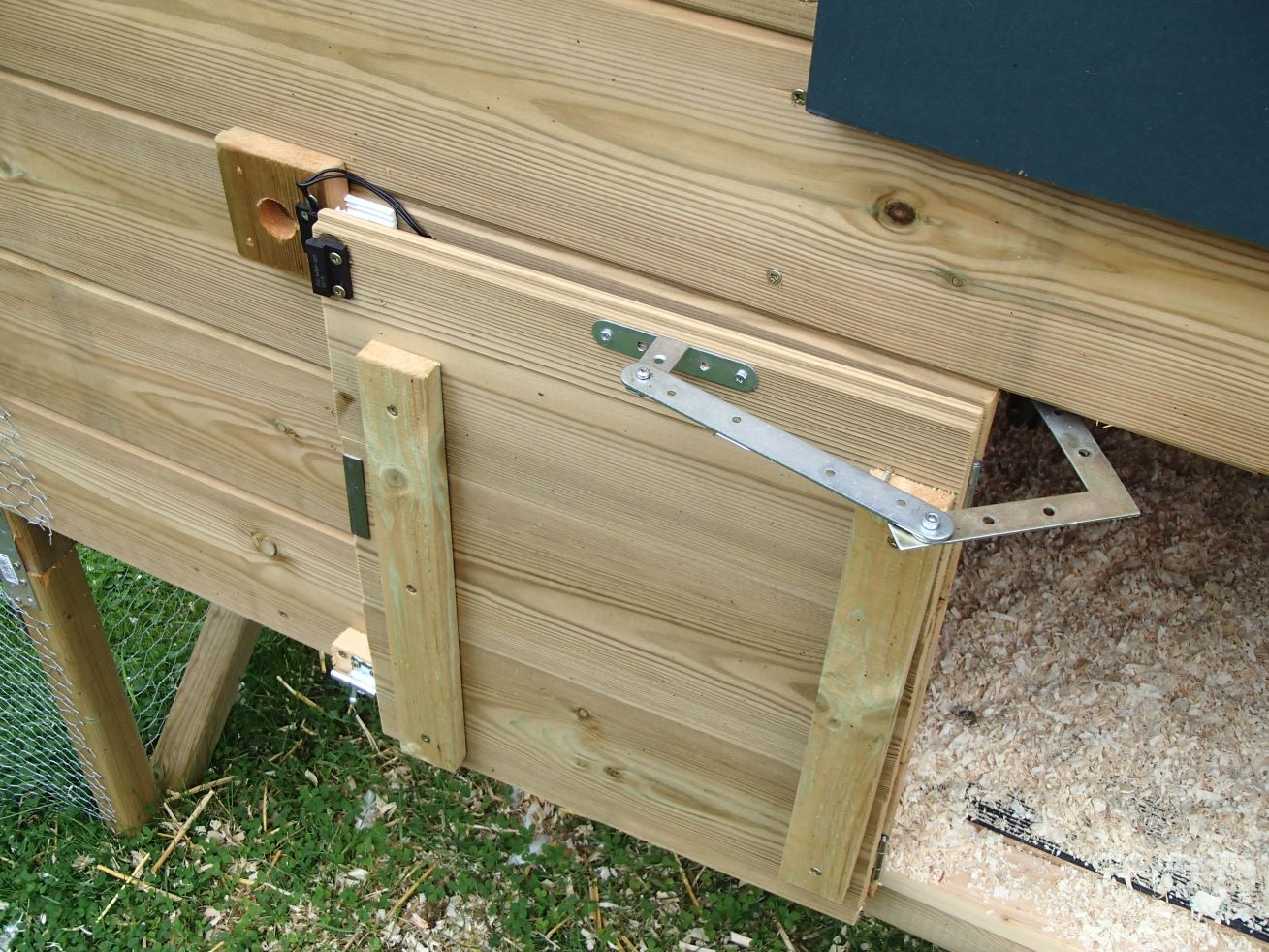
Overview photo with solar panels
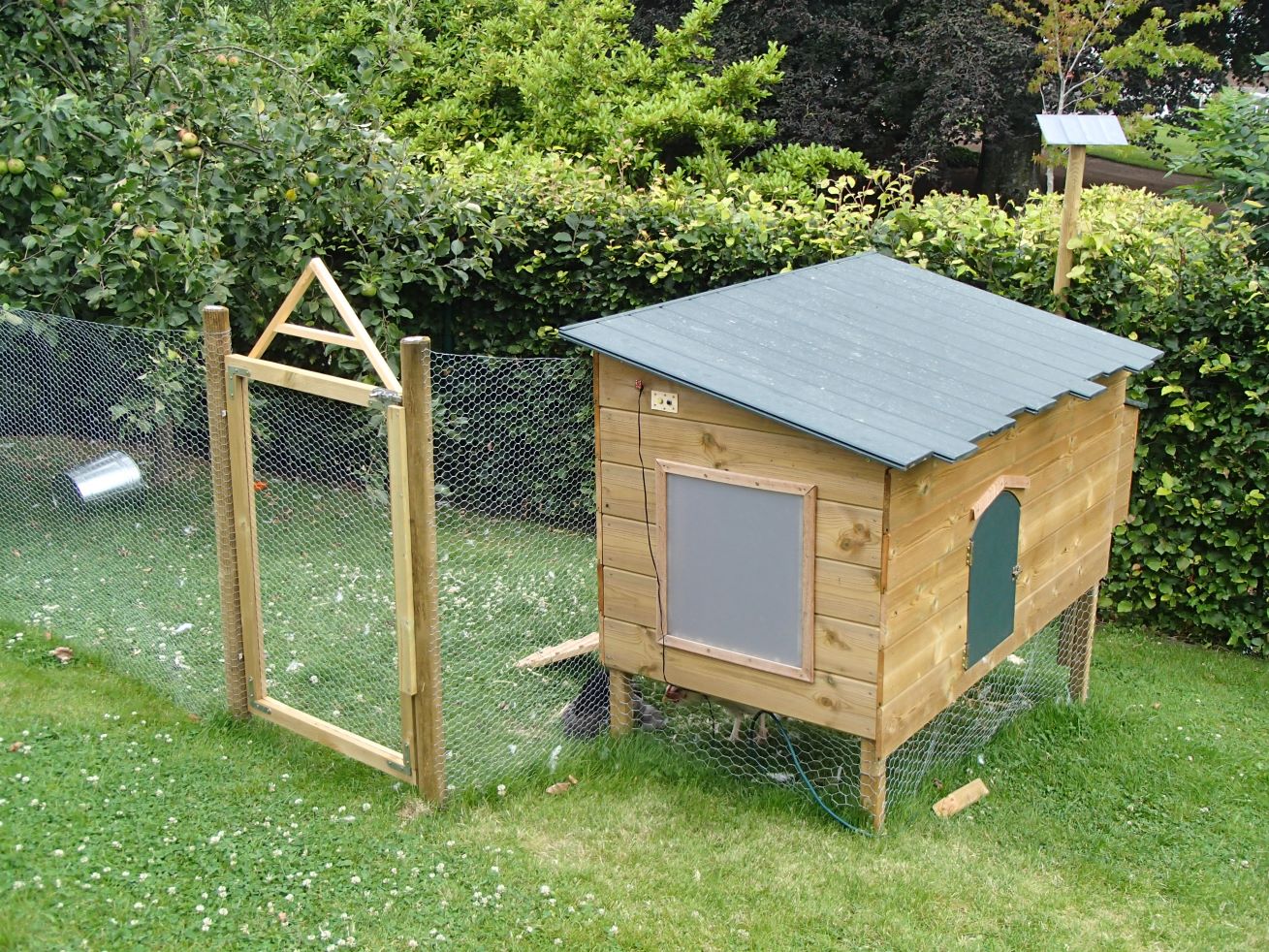
-
Damn... now i have to get chickens ;)
-
excellent :thumbsup: what a luxury poultry :)
-
The goal of this project is to automate our chicken shed to such a level that the chickens can survive our summer vacation without outside help.

The project is based on Domoticz(rPi) and MySensors (Sparkfun Redboard)
Sensors in the shed :- Temperature + humidity
- Ambient light sensor
- Current/voltage on the solar panels and on the motor
- PIR sensor
- End-of-run switches
- Two buttons for local activation of the door
Actuators :
- DC motor for opening/closing the door
- Relais for switching the inside light
- Relais for switching the webcam
The board arduino shield for connecting all the wiring

The complete installation
From left to right : (temporary) router for remote USB connection for uploading sketches, Arduino with shields, DC motor, Solar charging controller.
,

The shed in the making

The door mechanism & one of the end-of-run sensors

Overview photo with solar panels

-
Awesome :star: Thumbs up from me :+1:
-
Cococoricooo
hmm sorry, it was too hard to resist...I'm french :sweat_smile: -
@tbowmo Both food and water are "gravitationally supplied". There is a 15liter food and 1l water supply indoor and 12l water supply outdoor. These last for weeks.
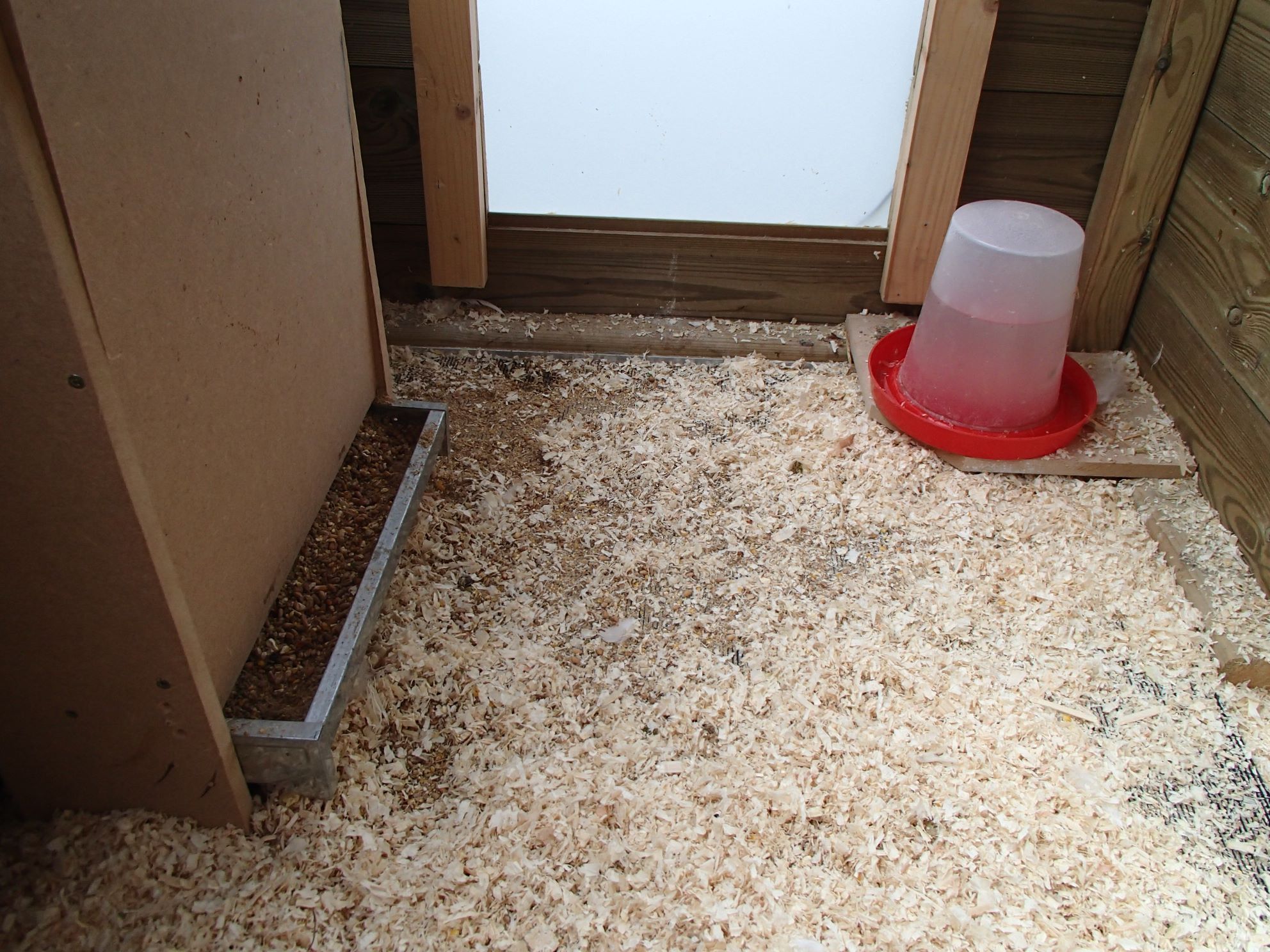
Wifi webcam is connected to Synology NAS camera app for recording. The aim is to enable the camera 5min before and after the closing of the door. Outdoor camera is on the wish list. Camera's can be enabled both automatically and remotely (like the door). Good news is that the chickens are smart enough to move out of harms way when the door closes. I noticed that the chickens go indoor very punctually on the internet provided sun-down, so the lux sensors may not be needed after all.
Remaining isuues are collecting of eggs and droppings. Both are less urgent and much more difficult to accomplish.
-
Is it important to know that all the chickens are in the coup before you close the door or are we just assuming they are all inside at a certain time?
-
Is it important to know that all the chickens are in the coup before you close the door or are we just assuming they are all inside at a certain time?
@TommySharp said:
Is it important to know that all the chickens are in the coup before you close the door or are we just assuming they are all inside at a certain time?
I use a light sensor and close the door at <5 lux. They are allways in by then.
-
Is it important to know that all the chickens are in the coup before you close the door or are we just assuming they are all inside at a certain time?
@TommySharp
Maybe all the chickens needs to be wearing a RFID tag, and then clsoe door when all counted RFID tags are inside (RFID reader could maybe be close to water/food supply) -
Is it important to know that all the chickens are in the coup before you close the door or are we just assuming they are all inside at a certain time?
@TommySharp, after some observation I set the light limit to 18 [something], I don't trust the light sensor to output Lux accurately. Till now they've always been inside when the door closes. They're social animal by the way, if one goes indoor at dawn, the other one follows within minutes.
-
@TommySharp, after some observation I set the light limit to 18 [something], I don't trust the light sensor to output Lux accurately. Till now they've always been inside when the door closes. They're social animal by the way, if one goes indoor at dawn, the other one follows within minutes.
-
@Fabien looks to be 1.5m fence around it, which could also keep the foxes out. But again, what do I know :laughing:
-
Yes, we have foxes (and rats) in the neighbourhood. Chicks get eaten if not locked up at night. The fence is only 1m high, but won't keep a fox away from the chickens.
I thought about RfId, but question is if one reader will detect tags anywhere in the shed.
Voice recognition is another option to account for all chickens. Maybe when I find the time. Pool automation must be taken care of first :-)
Anyway, it works as it is. Just need to set the light level in between chicken bed time and fox lunch time.
